Big creatures are captivating. The blue whale, the largest animal currently alive, can grow up to 98 feet long, which is truly massive (and the largest recorded blue whale measured a staggering 110 feet)! However, there are extinct animals that surpass even these sizes. Now, let's explore the eight largest extinct animals.
#1 Megalodon
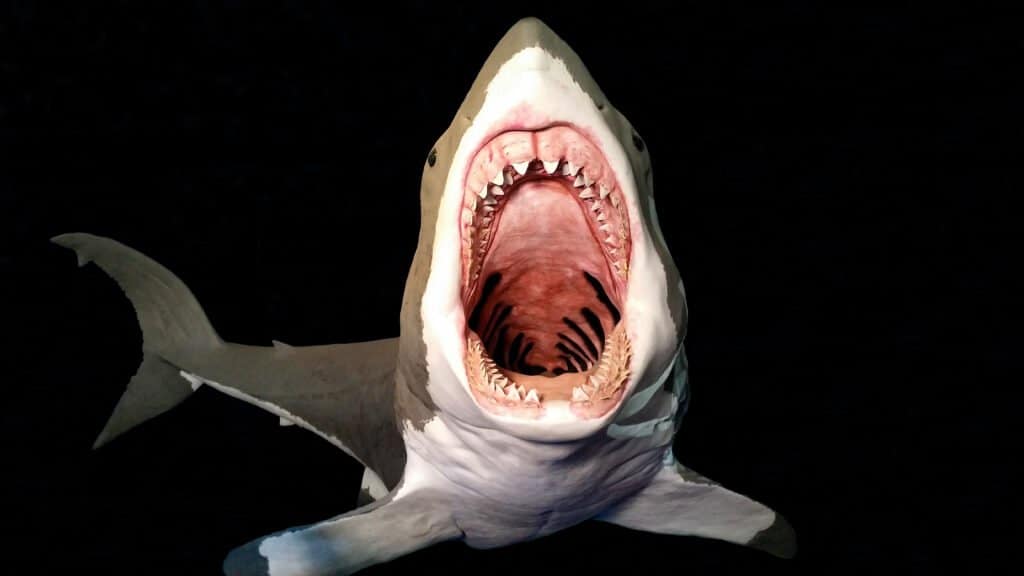
Megalodons, the colossal sharks, were of such immense size that they would make modern sharks appear minuscule in comparison. According to specialists, a fully grown megalodon could reach a staggering 20-50 times the size of a typical 15-20 feet long great white shark. It is believed that these ancient creatures could measure up to 50-60 feet in length, which is just slightly shorter than a standard bowling alley.
During the Neogene era, approximately 23.3 to 2.6 million years ago, colossal megalodons could have reached a staggering weight of 227,500 pounds, equivalent to 113 tons and surpassing the weight of a Boeing 757-200 airliner. These enormous creatures maintained their size by consuming small sharks and whales.
This was an apex predator when it was full size, but young megalodons were prey to sharks. Paleontologists think great white sharks contributed to their extinction by eating the youngsters. This article from Plos One journal demonstrates this massive killer shark used nurseries to protect its young!
That coupled with a cooling climate meant the biggest shark that ever lived became extinct. The exact date isn’t sure. Experts thought it was 2.6 million years ago, but recent research suggests it could have been a million years earlier.
#2 Giant Sloth

Giant sloths were enormous animals that weighed up to four tons and were 20 feet from nose to tail! This length is comparable with a giraffe’s height which is huge when you consider the size of today’s tree-dwelling sloths.
Megatherium Americanum is the largest extinct giant sloth found so far. They roamed modern-day south America and their fossilized remains are regularly found in Uruguay, Bolivia and Argentina.
They were one of the largest land animals to ever exist and most likely herbivores that used their seven-inch claws to dig up roots or pull down tall tree branches. Their prehensile tongues picked out the choicest leaves and their tough molars chewed up the fibrous mass.
It’s possible packs of dire wolves or cave bears preyed on giant sloths, but not much else could have taken down such a big animal even if it did waddle-walk to account for its massive claws.
Giant sloths appear in early human cave art, so they were likely important to them for meat and warm skins. A cave in the Colombian Amazon depicts a giant sloth that was painted 11,880 to 12,600 years ago around the same time they began to become extinct.
#3 Titanosaur Dreadnoughtus
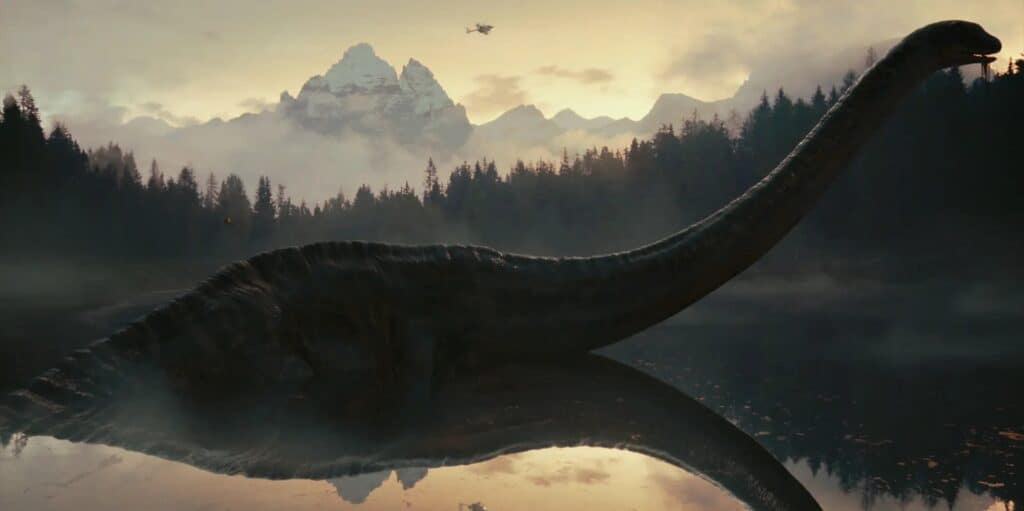
Titanosaurs are the biggest animals that have gone extinct on land. These massive dinosaurs were huge and Dreadnoughtus is possibly the largest of them all. Only one species of Dreadnoughtus ‘D.schrani’ has been found so far. It was discovered by American paleontologist Kenneth Lacovara in 2005 but who knows what else might turn up in the future.
This titanosaur was around 85 feet long and paleontologists still debate its weight estimating from 30 to 65 tons. Nothing walking on earth compares to its titanic proportions.
Dreadnoughtus means dread naught or fear nothing. It’s a good name because very little could have preyed on a grown adult! Dreadnoughtus was a herbivore that grazed tall trees and most likely ate stones to help grind up the fibrous matter.
Its fossils are found in modern-day Patagonia in Argentina and are around 77 million years old.
#4 Deinosuchus
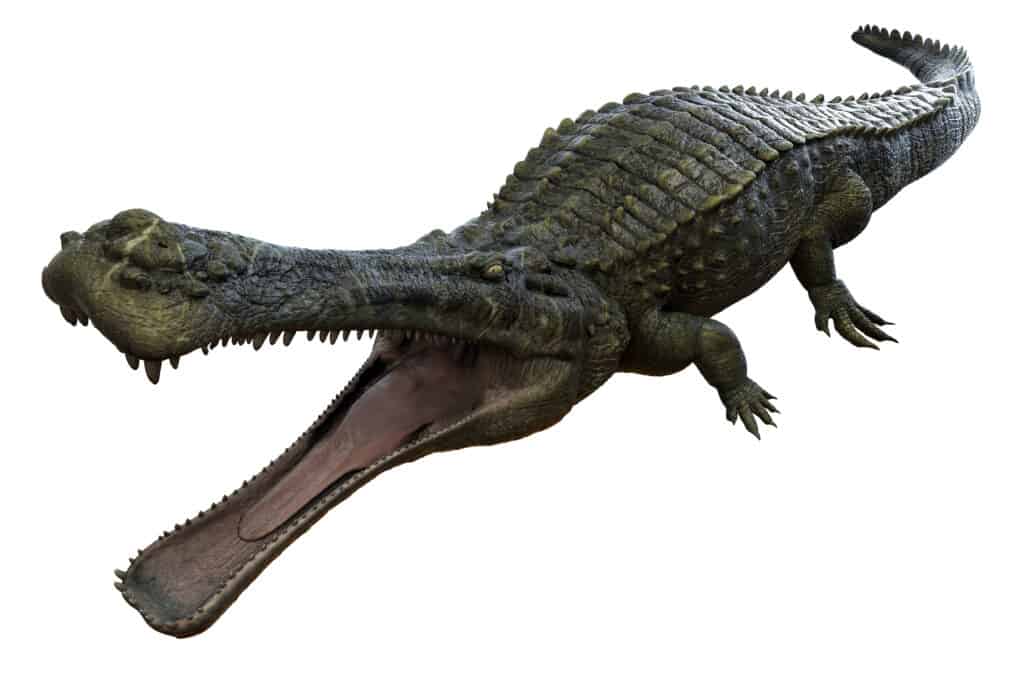
Deinosuchus was a 39 feet long crocodile and one of the biggest animals that have gone extinct from the riverbeds and lakes of Earth.
It lived 82-73 million years ago in the late Cretaceous period. Fossilized remains have been found in modern-day North Carolina, Montana, Texas, and northern Mexico. It was named Deinosuchus in the 1850s and its name means ‘terrible crocodile’. This massive apex predator opportunistically hunted fish, sea turtles, and unsuspecting dinosaurs drinking from the riverside.
It most likely looked like a modern-day crocodile or alligator with thick skin and large teeth but it was much bigger. One fossilized jaw indicates Deinosuchus’ head alone was five feet in length! It could breathe underwater with just its nostrils protruding, hiding from its victim before pouncing with banana-sized teeth. Studies estimate it had a bite force of 20,000 pounds per square inch, double that of a T-rex.
Paleontologists debate why Deinosuchus became extinct before a meteor strike killed the dinosaurs. Many think their habitat shrunk and the climate changed so their prey was harder to find. Sustaining such size would have taken a lot of fuel and without enough food, they couldn’t survive.
#5 Titanoboa
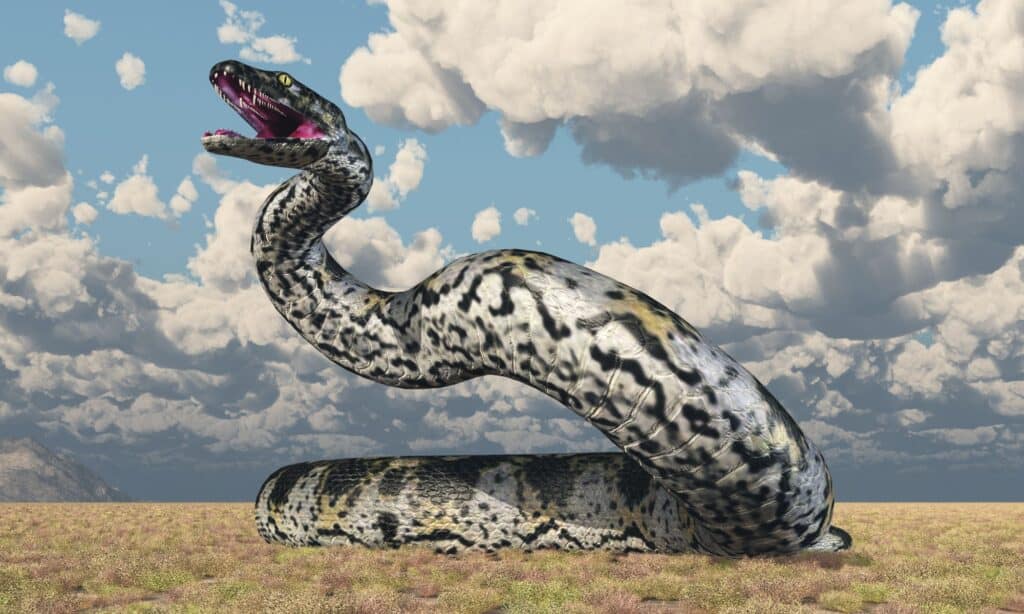
Titanoboa cerrejonensis was the largest snake to inhabit the earth and one of the biggest animals that has gone extinct.
This mega snake formed part of the Titanoboa snake genus from La Guajira in northeastern Columbia. It was a constrictor that weighed 2,500 pounds and with its 250 individual vertebrae reached 42 feet long. A fossilized skull measures 16 inches! Today’s green anaconda can’t compare at only a maximum size of 550 pounds and 30 feet.
This terrifying snake lived in river systems and tropical rainforests and most likely ate fish although paleontologists debate its diet. Its size could have made it an apex predator for any animals that got too close, but its teeth indicate a pescatarian diet.
Experts think it grew to such gigantic proportions because the tropical climate was so warm. However, when climate change cooled Earth the Titanoboa became extinct.
#6 Basilosaurus
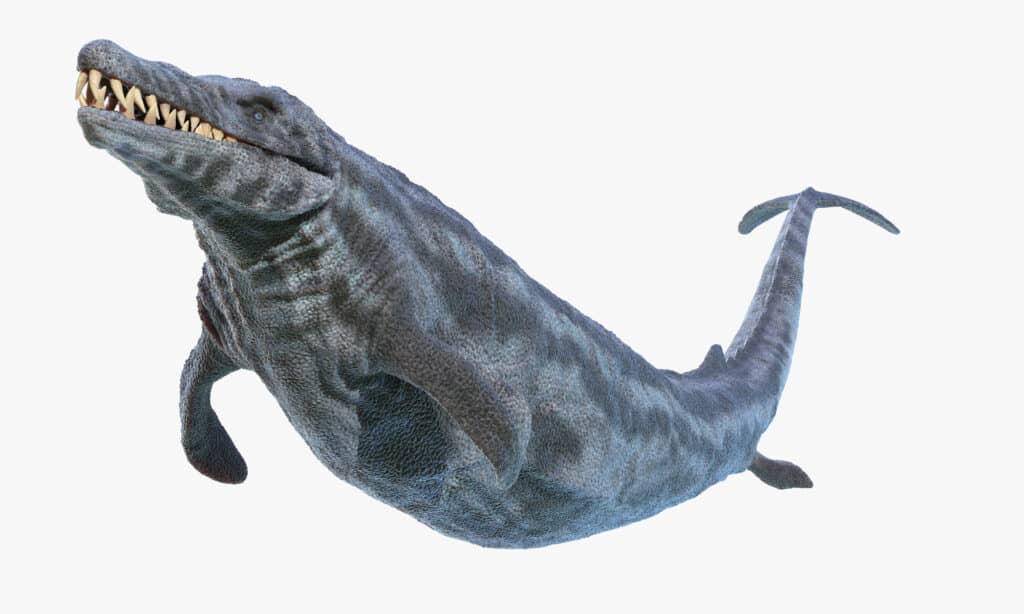
Basilosaurus, the King Lizard, was an up to 66-foot-long predatory whale that hunted sharks in the Tethys sea (now called the Pacific and Indian oceans).
Whale ancestors started life on land and moved into the ocean which is why they are a mammal species that breathe air. Experts think Basilosaurus was one of the genera that moved to the ocean. There, it was an apex predator able to grow to enormous sizes supported by water.
As well as eating large fish and sharks this massive whale probably took shoreline animals too. Studies show it had a bite force of 3,600 pounds per square inch which is about the same as a saltwater crocodile.
This huge carnivorous whale died out 35-33.9 million years ago. Their fossilized skeletons are found throughout America. Experts think they went extinct due to volcanic activity and climate change.
There are no descendants of Basilosaurus – something water sports fans are thankful for!
#7 Elephant Birds – Vorombe Titan
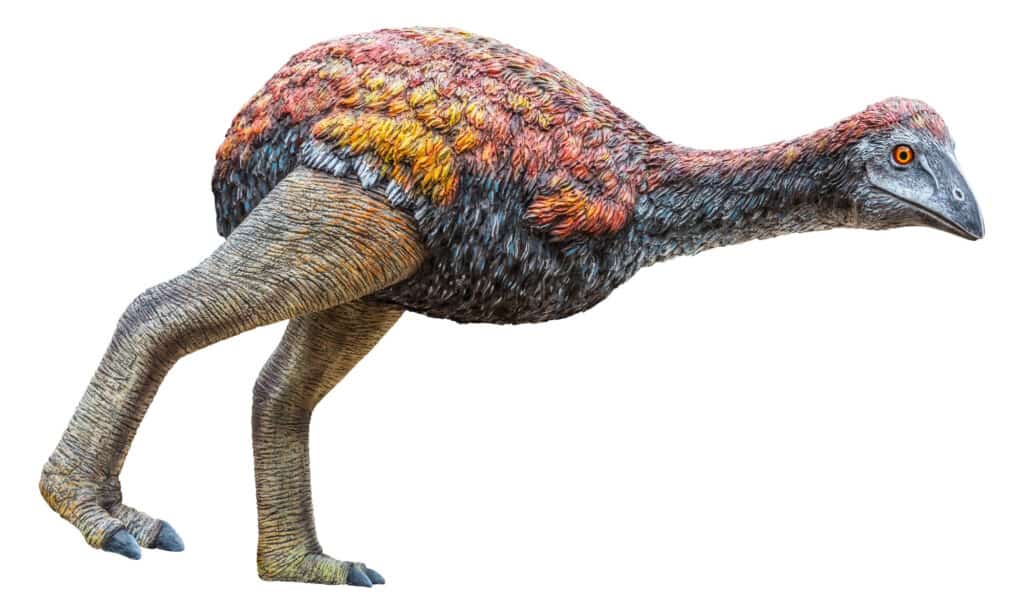
A list of the biggest animals that have gone extinct isn’t complete without a bird or two. Take elephant birds for example. They were flightless ratites of the Aepyornithidae family that only went extinct 1000 years ago.
The largest found was Vorombe titan. This massive bird lived in Madagascar towering almost 10 feet tall and weighing up to 1,600 pounds. That’s five times the weight of today’s ostriches. Although huge, their closest living relative is the New Zealand kiwi bird.
They ate seeds, nuts, and low-hanging tropical fruits from their rainforest environment. No youngsters have been found, but their fossilized egg fragments show the females laid 10 x 13-inch eggs!
Elephant birds became extinct due to human activity. As humans cleared forests for farmland their habitat shrunk. Humans also hunted Vorombe titan for its meat and took its eggs.
#8 Giant Woolly Rhino
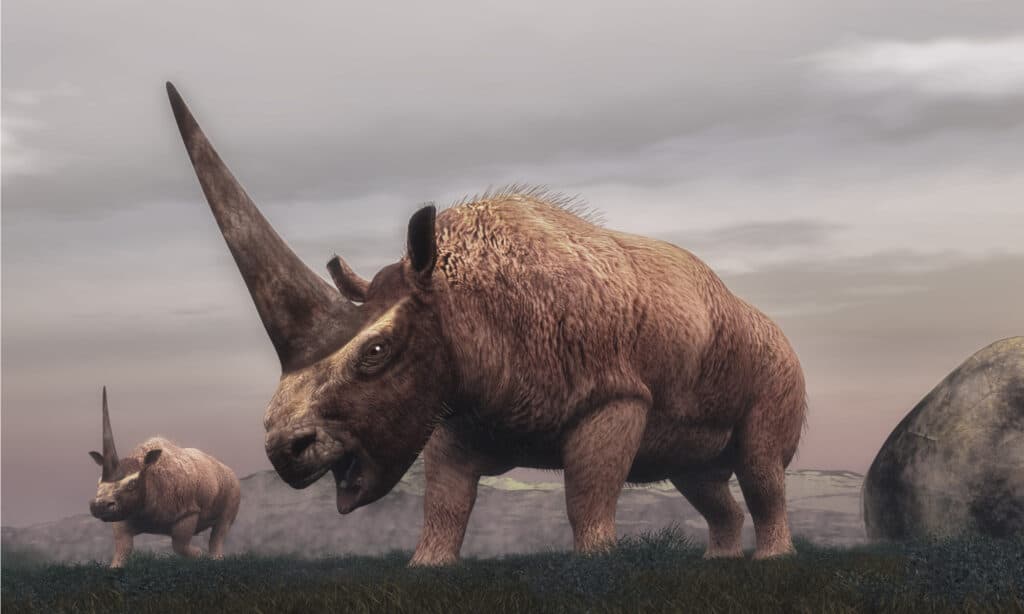
Elasmotherium was a giant woolly rhino that lived in the late Miocene to Pleistocene era and went extinct around 40,000 years ago at the same time other massive megafauna began to die out. It’s sometimes called the Steppe rhino because it lived in the vast steppe grasslands of modern-day Russia, Siberia, and Ukraine.
This hairy rhinoceros reached a whopping 20 feet in length and nearly seven feet in height. It was huge and very few predators could manage to take down an adult, or even pierce its leathery skin.
The largest woolly rhino was E. sibiricum. It was mammoth-sized with a horn on its forehead. No horn has been found, but a hole in the skull of a fossilized specimen indicates they had one.
This horn was used to attract mates and fight predators but also to sweep the snow away from its herbivorous diet of moss and grasses. Interestingly, this extinct woolly rhino had longer legs than modern-day rhinos and paleontologists think it may have galloped like a horse.
Climate change and dwindling grasslands contributed to its decline and eventual extinction.
The Biggest Extinct Animals Just Keep Coming!
That ends our list of the biggest animals that have gone extinct, but there are many more megafauna, dinosaurs, and prehistoric creatures that reached massive proportions. It’s a fascinating subject because paleontologists just keep finding bigger and heavier animals!
What Large Animals Are in Danger of Extinction?
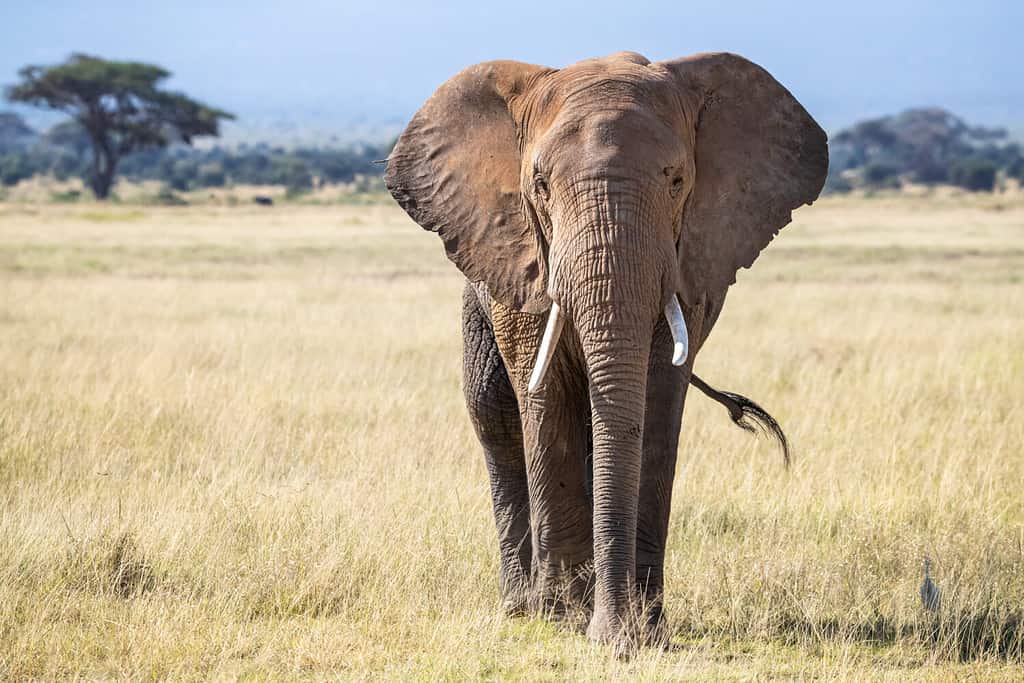
As we’ve discovered, some jaw-droppingly huge animals went extinct on Earth in ages past. Unfortunately, there are more large animals under threat of extinction. Overall, the IUCN has listed 5,766 different animal species as endangered. The criteria for a species to be added to the endangered list are as follows:
- Population reduction–A taxon’s population is reduced by 50-70% due to certain factors defined by the IUCN
- Geographic Reduction–The specie’s extant area is reduced to between 5,000 and 500 square kilometers
- Dangerously low number of adults–A taxon’s population only has 2,500 or fewer adults left
- Expected rapid decline
Below is a list of three of the largest animal species today that are facing extinction:
1. African Savannah (Bush) Elephant/African Forest Elephant/Asian Elephant
Elephants are the largest land mammals on Earth, and unfortunately, they are facing extinction. African forest elephant numbers have declined by over 86% in the past 31 years, while African savanna elephants have decreased by 60% over the last 50 years. Both cases have resulted from poaching and habitat loss. Meanwhile, Asian elephants are endangered due to habitat loss, fragmentation, and poaching. There are only an estimated 30,000 to 50,000 left in the wild. Currently, both African savannah and Asian elephants are listed as endangered, while African forest elephants are critically endangered.
2. Bengal Tiger/Siberian Tiger/Sumatran Tiger/Indochinese Tiger/Malayan Tiger/South China Tiger
Tigers are the largest cat species on the planet, but all 6 extant species are either endangered or critically endangered. Three species have gone extinct in the last 100 years: the Javan tiger (1970s), Bali tiger (1930’s), and Caspian tiger (2003). Tigers have faced the largest threat due to habitat loss and poaching (for their exotic coats, and in some places, consumption and use of other body parts for rituals, jewelry, and more).
3. Blue Whale
Blue whales are the largest animals on the earth, inhabiting the planet’s oceans. They were hunted in the past for their meat and blubber, to the point that their numbers dropped from an estimated 200,000 in the 1800s to 20,000 today. They are listed as endangered by the IUCN. Currently, their greatest threat is global warming.



Post a Comment
0Comments